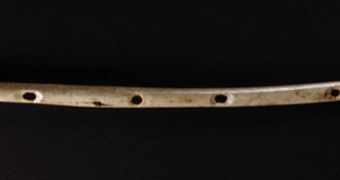New found archaeological proof seems to indicate the fact that music was an integrated part of the human culture as early as the time when the first modern humans colonized Europe, some 35,000 years ago. Recent finds placed the oldest known instruments less than 30,000 years ago, but the bird-bone and ivory flutes that were recently found in Germany indicate the fact that this behavior went hand-in-hand with our species since we first developed in our modern shape.
The artifacts were found in 2008 in the Hohle Fels and Vogelherd caves, by Archaeologist Nicholas Conard, an expert at the University of Tubingen, in Germany. After careful analysis of the way the flutes and the other found artifacts were built, the research team concluded that their age far surpassed that of the earlier finds, which were uncovered in Austria and France. Conrad is more famous for discovering one of the oldest goddess figurines in history, a find he presented to the world this May.
In a paper published on June 24th in the online issue of the respected scientific journal Nature, the experts reveal that the flute that was best preserved was made from a Griffon vulture wing bone, and that it had five finger holes. Around the holes, the German experts found markings, which may have indicated that the raw bone was first inscribed with the locations of the holes, before being cut. This may suggest that some of the people at the time knew exactly how far apart the holes should be, in order for the sounds to come out right.
These measurements are still used to date, the team has also revealed. In other flute fragments they found, made either from ivory or from a swan wing bone, the same distances were respected. After carving out a replica of the ancient flute, the researchers determined that it made a sound in many respects similar to that made by modern-day flutes. The old instrument also had a V-shaped notch at one end, which Conrad believes may have been used as a mouthpiece.
“The flutes were likely used in all kinds of social settings. You might think these artifacts would be discarded in a special place, but in general, they were just lying there with everything else, which leads me to believe they were part of everyday life,” the researcher concludes, quoted by ScienceNow.

 14 DAY TRIAL //
14 DAY TRIAL //